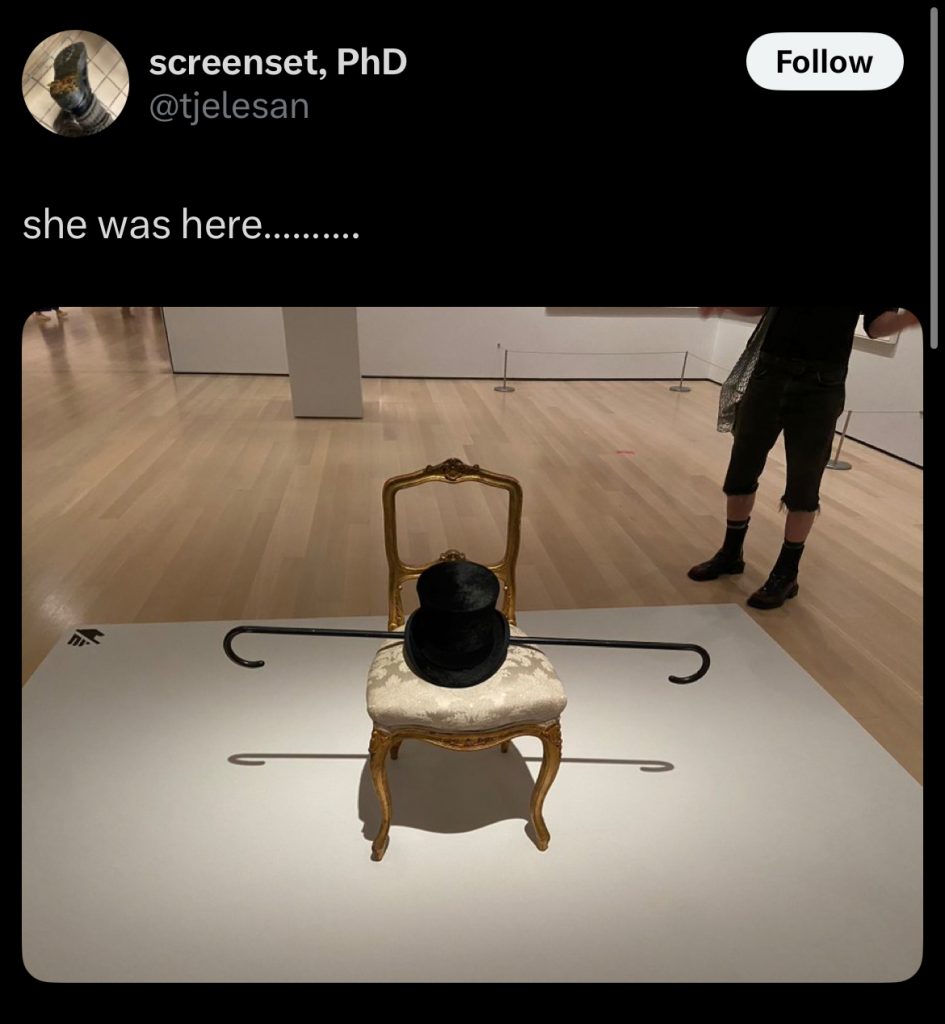Have you ever seen something that exists in the context of a meme and wondered whether that item can exist within its context in the “real world”, or, for better terms, the offline world? Memes are created and exist in online spaces; the space differs according to a person’s preference, whether that’s Instagram, Twitter, Reddit, TikTok, etc. Regardless of the type of meme you see, there is a chance it exists in the offline world, but that will depend on your personal perception.
I inadvertently began exploring the idea of offline artefacts when I created the meme shirt for my friends, which placed memes out in the offline world. Whenever each person would wear the shirt, they would be displaying their interests and sense of humor on their person.
Below you can find another example of how offline artefacts behave.


For context, the image used on the meme on the left, from the HBO series Sex and the City, we see Carrie in a black top hat and a cane, attempting to impress her crush with a witty costume, which, as an image, became shorthand for public humiliation. But offline, the combination of the hat and the cane itself began carrying that meaning. Whenever my friends or I see one in real life, we instantly reference the meme. The objects have become artefacts of that shared joke, one that only those in the know will understand.
The offline artefact can be an item, but it can also be a physical space. An example of that would be the, and people began making meme edits of it. The slide that was once only a fixture of the Boston City Hall Plaza has now become a viral meme location to visit under the name of Cop Slide.
These examples are just a starting point that I want to explore regarding offline artefacts. These moments show how memes translate into everyday life, reshaping how we see spaces and objects around us. What used to be “just a black hat” or “just a slide” is now fuelled with shared meaning. As the world my friends and I share revolves around memes, tracking these artefacts would almost be like uncovering a layer of cultural code.

Leave a Reply